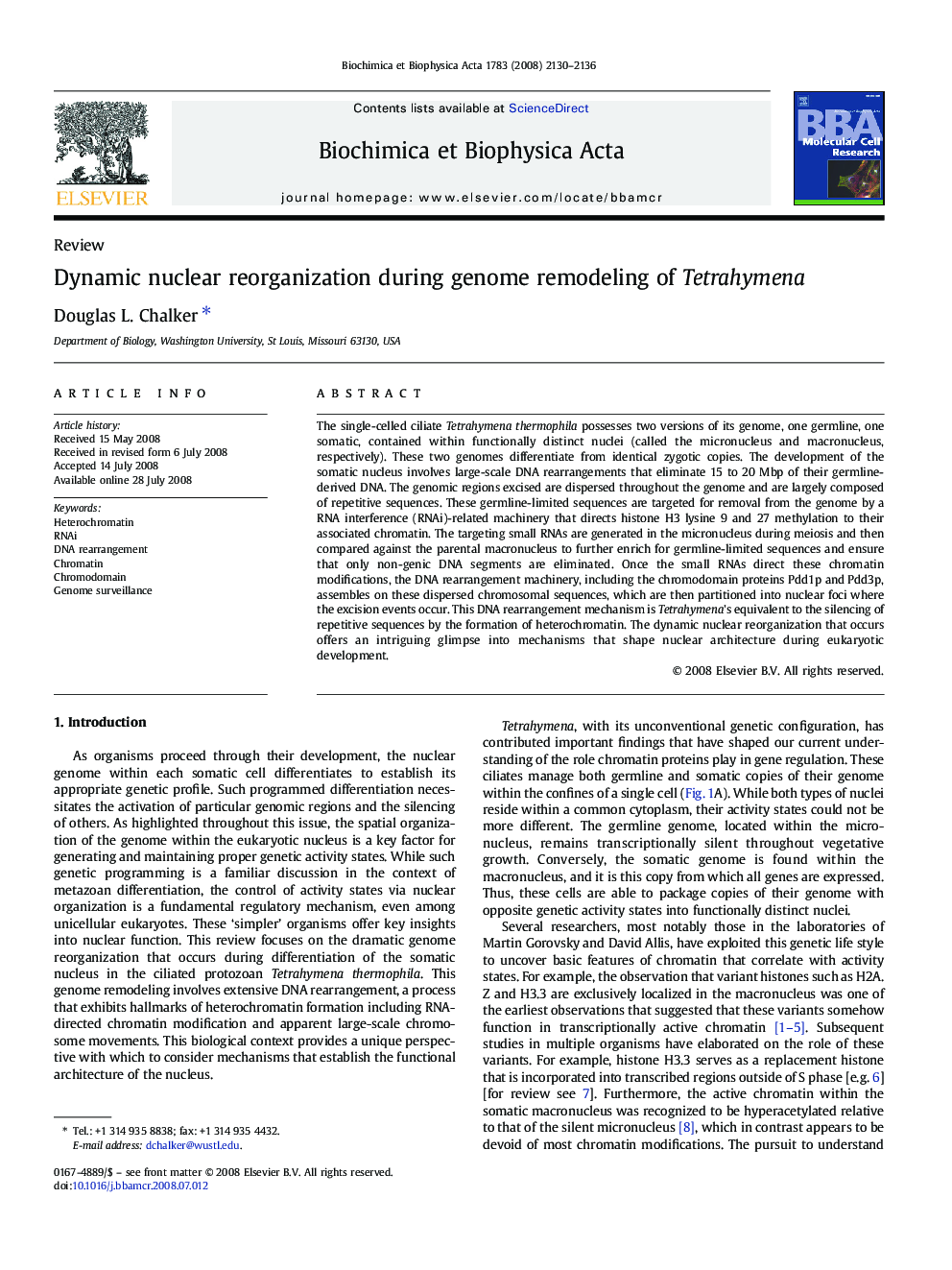| Article ID | Journal | Published Year | Pages | File Type |
|---|---|---|---|---|
| 1951446 | Biochimica et Biophysica Acta (BBA) - Molecular Cell Research | 2008 | 7 Pages |
The single-celled ciliate Tetrahymena thermophila possesses two versions of its genome, one germline, one somatic, contained within functionally distinct nuclei (called the micronucleus and macronucleus, respectively). These two genomes differentiate from identical zygotic copies. The development of the somatic nucleus involves large-scale DNA rearrangements that eliminate 15 to 20 Mbp of their germline-derived DNA. The genomic regions excised are dispersed throughout the genome and are largely composed of repetitive sequences. These germline-limited sequences are targeted for removal from the genome by a RNA interference (RNAi)-related machinery that directs histone H3 lysine 9 and 27 methylation to their associated chromatin. The targeting small RNAs are generated in the micronucleus during meiosis and then compared against the parental macronucleus to further enrich for germline-limited sequences and ensure that only non-genic DNA segments are eliminated. Once the small RNAs direct these chromatin modifications, the DNA rearrangement machinery, including the chromodomain proteins Pdd1p and Pdd3p, assembles on these dispersed chromosomal sequences, which are then partitioned into nuclear foci where the excision events occur. This DNA rearrangement mechanism is Tetrahymena's equivalent to the silencing of repetitive sequences by the formation of heterochromatin. The dynamic nuclear reorganization that occurs offers an intriguing glimpse into mechanisms that shape nuclear architecture during eukaryotic development.
